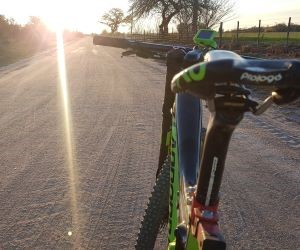Learn how to deal with punctures on long rides with prevention tips, repair techniques, and smart gear choices to keep rolling without stress.
HOW DO I RIDE SAFELY IN MIXED TRAFFIC CONDITIONS?
Cycling in mixed traffic conditions can be intimidating, but with the right mindset, equipment, and techniques, it can be both safe and efficient. Riders must navigate cars, buses, trucks, and pedestrians while staying visible and predictable. This article provides strategies to improve confidence, reduce risks, and ride more smoothly alongside motor traffic.

Understanding mixed traffic challenges
Mixed traffic conditions describe environments where cyclists share roads with vehicles of all sizes and speeds. Unlike protected bike lanes, these situations demand extra vigilance. Hazards come not only from vehicles but also from pedestrians, parked cars, and unpredictable traffic patterns.
Key risks of mixed traffic
Cyclists must account for sudden lane changes, blind spots, and driver behavior. Road design often prioritizes cars, leaving limited space for bicycles. Understanding these risks helps cyclists adapt and respond effectively.
Blind spots around large vehicles like buses and trucks.
Dooring risks from parked cars.
Drivers making sudden turns without signaling.
Traffic congestion leading to unpredictable movements.
Psychological demands
Riding in mixed traffic requires mental focus and calm under pressure. Cyclists often feel invisible or vulnerable among larger vehicles, making confidence and composure essential traits for safe riding.
Visibility and communication
One of the most effective ways to ride safely in traffic is to maximize your visibility and communicate clearly with other road users. Cyclists who stand out and signal their intentions reduce the risk of collisions caused by misunderstandings.
Making yourself visible
Bright clothing, reflective gear, and proper lighting ensure drivers see you from all angles. Use a white headlight and a red taillight, even during daylight, to increase visibility. Reflective ankle straps and vests highlight movement, drawing attention more effectively than static reflectors.
Front and rear lights for all conditions.
Reflective strips on clothing and gear.
High-visibility colors for daytime riding.
Helmet-mounted lights for added eye-level awareness.
Clear communication with drivers
Using hand signals consistently is critical. Signal turns early, establish eye contact with drivers when possible, and ride predictably. Avoid sudden swerves or unexpected stops, as they leave drivers little time to react.
Body language also plays a role. Positioning yourself confidently in the lane communicates that you are a legitimate road user, not a secondary obstacle. Assertive riding discourages unsafe passing and helps integrate cyclists into traffic flow.
Defensive riding strategies
Defensive cycling means anticipating risks before they become problems. By adopting proactive habits, cyclists can reduce exposure to common dangers in mixed traffic environments.
Lane positioning
Hugging the curb may seem safer, but it often puts cyclists in more danger. Instead, position yourself a safe distance from parked cars to avoid dooring, and move toward the center of the lane when necessary to discourage unsafe overtakes.
Anticipating driver behavior
Cyclists should always assume that drivers may not see them. Watch for signals, wheel movements, or hesitation that indicate a car might turn or merge. Anticipating mistakes gives you extra time to react.
Slow down when approaching intersections.
Avoid riding in truck and bus blind spots.
Use mirrors or frequent shoulder checks.
Leave escape routes in heavy traffic.
Balancing assertiveness and caution
Safe riding in traffic requires confidence but not recklessness. Being too timid can encourage drivers to crowd you, while being too aggressive can escalate risks. The balance lies in riding predictably, signaling clearly, and making deliberate, visible movements.
Ultimately, riding safely in mixed traffic is about respect and awareness. Cyclists who assert their place on the road, maintain visibility, and anticipate hazards can navigate even the busiest urban streets with confidence and security.
YOU MAY ALSO BE INTERESTED






